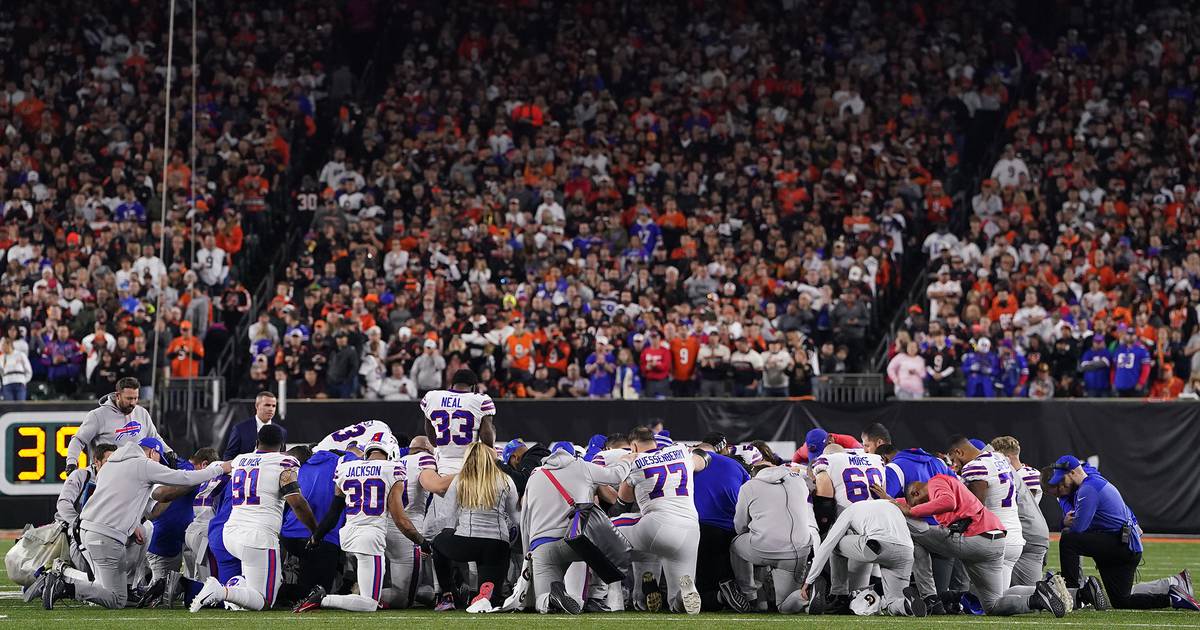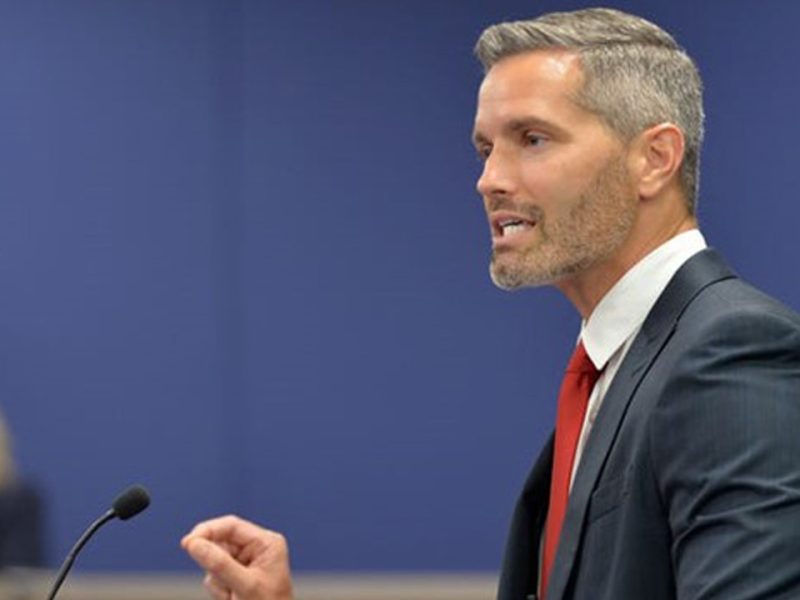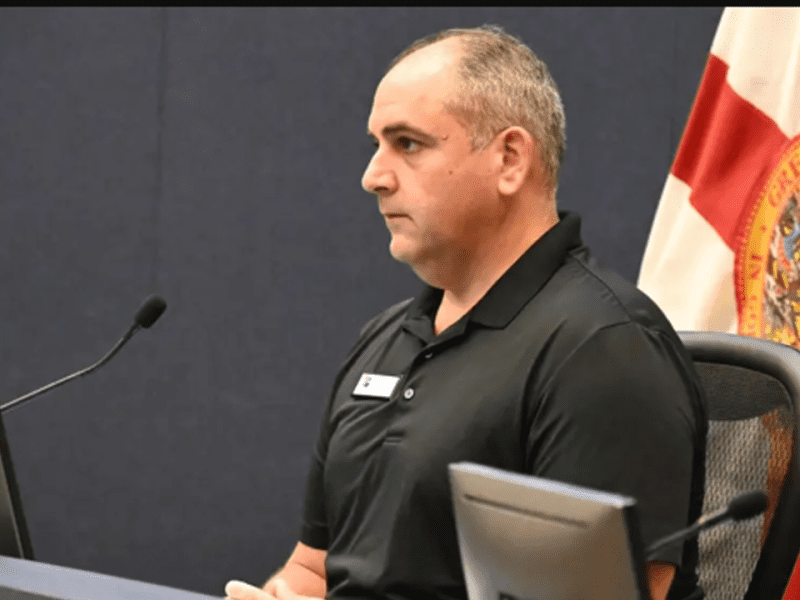Damar Hamlin’s cardiac arrest, swift response highlight need for CPR training, AED access
Orlando Sentinel | By Caroline Catherman and Ryan Gillespie | January 5, 2023
The chilling scene of Buffalo Bills defensive back Damar Hamlin suffering cardiac arrest during Monday Night Football and requiring CPR has highlighted the need for people to be trained in the life-saving maneuver, experts say.
Dr. Gul Dadlani, Nemours chief of Pediatric Cardiology, said Hamlin was lucky because when his heart stopped beating he was near a team of medical staff who knew how to do chest compressions and use a defibrillator. If this had happened in his house, or in his car, he likely would have died.
“Hamlin’s case was so completely tragic,” Dadlani said. “Just as tragic, though, is the high school student that passes away in their local community or the nonathlete who’s at the gym and suffers a sudden cardiac arrest and no one’s there to provide CPR or a defibrillator, and they don’t have a chance.”
Hamlin, 24, was hospitalized in critical condition after leaving the stadium in an ambulance Monday. After a tackle, Hamlin stood up and moments later collapsed appearing unconscious. Medical personnel at the stadium performed CPR and used an automated external defibrillator, or AED, to treat him, USA Today reported.
The Bills said in a statement Thursday that Hamlin “has shown remarkable improvement” and “has demonstrated he appears to be neurologically intact” as his lungs heal.
It hasn’t been publicly disclosed what caused Hamlin’s cardiac arrest, though Dadlani said it could have been a number of causes, ranging from genetic heart abnormalities to a heart defect at birth, heart disease, or, in the rarest cases, a condition called commotio cordis, which is when someone is struck in the chest at just the right moment in the heart’s electrical cycle. Some of these conditions can be diagnosed with EKGs, Dadlani said.
Sudden cardiac arrest — the unexpected loss of heart function, breathing and consciousness — is the most common cause of sudden death in athletes. Researchers estimate there are about 100 to 150 sudden cardiac deaths during competitive sports per year. Only about 10% of people who experience a cardiac arrest outside a hospital survive, according to the American Heart Association.
If performed immediately, CPR can double or triple a person’s odds.
It involves administering hard and fast chest compressions to someone’s heart at the beat of 100 to 120 per minute — the beat of the song “Stayin’ Alive” — after their breathing and heartbeat stop. Breathing into a person’s mouth is no longer recommended unless someone is highly experienced at the technique.
Odds of survival jump to nearly 70% if a bystander uses an AED rather than wait for emergency personnel to do so, according to a Johns Hopkins University analysis.
“CPR education is important,” Dadlani said. “It can save lives. Having a defibrillator available at school events can save lives. Having access to the defibrillator needs to be readily available.”
State law requires Florida High School Athletic Association member schools to have a working AED wherever games, practices, workouts and conditioning sessions are held. Also, a school employee or volunteer trained in CPR and in using an AED must be present.
In Orange County, all 9th and 11th grade students participate in a one-hour first-aid training that includes CPR, said Michael Ollendorff, a spokesperson for the district. The training is in partnership with first responders and the American Heart Association, he said.
More than 33,000 students are due to be trained on Jan. 26, and the course is a requirement for graduation, Ollendorff said.
More than 500 AEDs are in place throughout the district, he said, including at least five at all high schools, three at middle schools and Orange Technical College campuses, and one at each elementary school.
Evan Ernst, executive director of the nonprofit Who We Play For, said Hamlin’s cardiac arrest reminded him of Nov. 30, 2007, the day his Cocoa Beach High School soccer teammate Rafe Maccarone collapsed of sudden cardiac arrest at a team practice. A coach and teammate tried to perform CPR, while others searched for an AED, which was found locked away in a room.
Rafe, who was 15, had an undiagnosed heart condition called hypertrophic cardiomyopathy, and cardiac arrest was the first symptom. He died the following day.
“We watched our friend die the exact same way — just drop dead,” Ernst said.
Ernst and friends eventually started the nonprofit, which has advocated for requiring electrocardiograms, also known as ECGs or EKGs, for all student athletes. The screening is $20 alongside a sports physical and the nonprofit offers financial assistance to athletes who cannot afford them.
The group also advocates for training in CPR and increasing availability of AEDs, both of which were credited in the treatment of Hamlin.
“Because of what looked like a fantastic emergency action plan, Damar has a chance at life,” Ernst said. “Ninety-plus percent don’t have that chance.”
Orange, Osceola, Seminole, Brevard and Volusia counties now require the screening, along with other districts covering about 30% of students in the state, he said.
A bill filed by Rep. Fred Hawkins Jr. in 2021 required ECGs for students playing sports, but lawmakers stripped out that requirement and instead approved another portion of the legislation requiring CPR instruction. Hawkins refiled the legislation in 2022 but it wasn’t approved.
Ernst said he hopes ECGs become a standard of care for students.
“I want the state of Florida to follow Brevard, Orlando and Central Florida in making ECG the standard of care for student-athletes and students,” he said.






